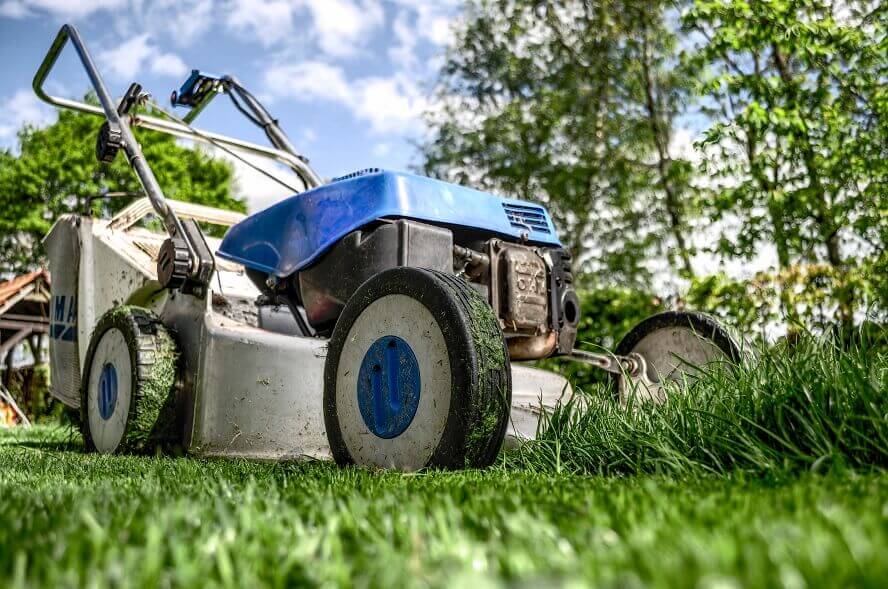If you have a yard, you’ve probably been out mowing or weeding more than once already now that May is well under way. Since you’ll likely be out there again soon–like this weekend–let’s make sure you’re being safe while being mindful of your yard’s maintenance, so you’re able to enjoy it in peace…and in one piece.
1) Speaking of mowing…
Where we live, the grass grows like crazy once the weather warms up a little bit and I am ever so grateful for the riding mower that helps me (sort of) keep up with it. Lawnmowers of every kind, however, for all of the beauty they bring about by enabling neatly manicured lawns, are potential hazards. Here’s how to minimize those hazards:
Whether you’re mowing or weed whacking, wear protective eye gear, long pants and long sleeves. If the equipment is loud enough, wear ear plugs too. It might be too warm for covered skin, but I can tell you from experience that a flying rock set in motion by a weed whacker will do some serious damage to your bare skin!
Only gas up when the engine is cool and in a well-ventilated area (like outside!), and store the gasoline in a safe place, out of reach of any little hands as well as in a place where it can’t be knocked over. Obviously, you should only use an approved container for storing the gas as well. (Need I say you shouldn’t be smoking while refueling? I didn’t think so.)
2) Commonsense tool and chemical storage
In addition to keeping the gasoline stored in a safe place, make sure any lawn-care tools and chemicals are as well. This is for the protection of the kids and you. Sure, it’s a cliché from a cartoon to see someone step on a rake and get hit in the face, but guess what? It happens. Anything with sharp edges, like a rake or pruning shears, needs to be stored in such a way that injuries can’t happen. Be broadminded when you think about what falls into this category of tools needing commonsense storage: Even a small digging tool for ferreting out dandelion weeds can be potentially dangerous depending on the circumstances–and the (little) hands that get hold of it.
Chemicals such as fertilizers, herbicides and pesticides also must be kept out of reach, and—like the gasoline—stored so they can’t accidentally get knocked over. And always, always keep these chemicals in their original containers!
3) Keep sidewalks and walkways clear
OK, I admit it: I am lazy when it comes to putting hoses away, and this is dangerous. Hoses, extension cords, power cords…if you’re dragging something across the lawn and front walk to do some yard maintenance, make sure you drag whatever it is back again and put it away so no one trips over it.
Also give these walkways and any outdoor stairs a good once over, checking for tripping hazards or even loose boards. The freezing cold of winter can cause sidewalks to crack or even buckle, and the wet weather can wreak havoc on wood.
4) Remove the attractive hazards
You might see just a ladder and a bucket lying out in your yard, but you know what you’re really looking at? A good fall and a drowning hazard. Kids will be kids. Put the ladder away as soon as you’re done with it, and put any buckets out of reach of kids too. Remember that a bucket hardly needs any water to be a drowning hazard for a young child. And there’s no reason to have it out anyway, right? I mean, you’re working on making your yard pretty, so think of stuff like this as “clutter” and get it out of sight, and you’ll be safe as well as tidy.
For those of us who suffer through long, dreary winters, the warmer weather of spring and summer is to be savored outdoors whenever we get the chance. Let’s make sure that we’re around to do that savoring by following some yard maintenance safety tips!

